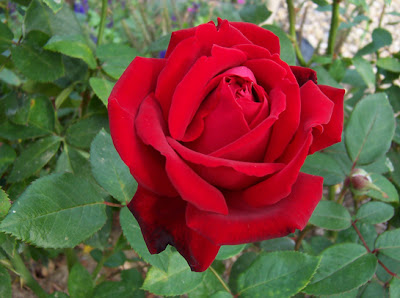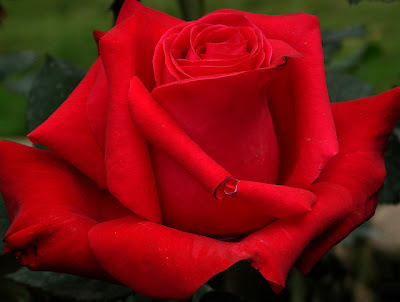



Hansa blooms throughout the season, in the same manner as R. rugosa, often displaying ripening hips at the same times as new blooms are opening.
The flowers are a clear magenta hue, not a true red. The photo is true to color.
Like most of the Rugosa class, particularly the ones that most closely resemble the species, this shrub is completely resistant to the typical rose diseases. For this trait alone this rose can be placed high on the list of larger desirable shrub roses!
Hansa offers the distinct Rugosa fragrance, which can be described as Old Rose mixed with clove.
Bloom form is fully double, but of no particular arrangement of petals. We could call this a rosette form of 4'' - 10,2 cm.
It has a height of 5' to 7' - 150 to 215 cm and a width of 4' to 7' - 120 to 215 cm. Given the space to get to this size, it forms a wonderful treelike form with an umbrella shaped canopy. Rather than pruning this shrub to keep it small, people should be encouraged to place it where it can be allowed to take on these treelike characteristics. It suckers profusely and can be used as screen.
The beauty of these old plants of Hansa is really impressive. And the smell... mmmm!
The flowers are edible, as the hips are! You can make jam of them, although a good friend of mine eats them just like that, without cooking! :) He says they are sooo sweet!
Zone 3 to 9.
Zone 3 to 9.













